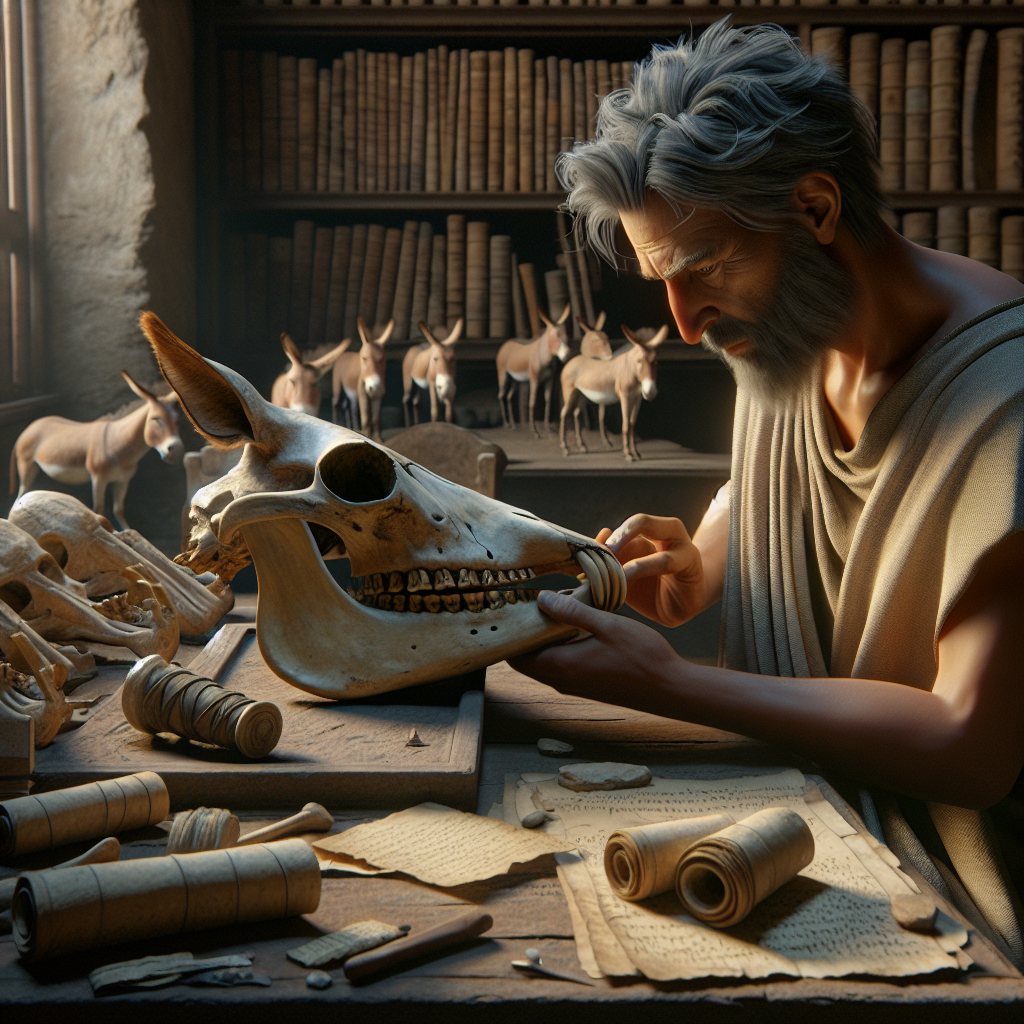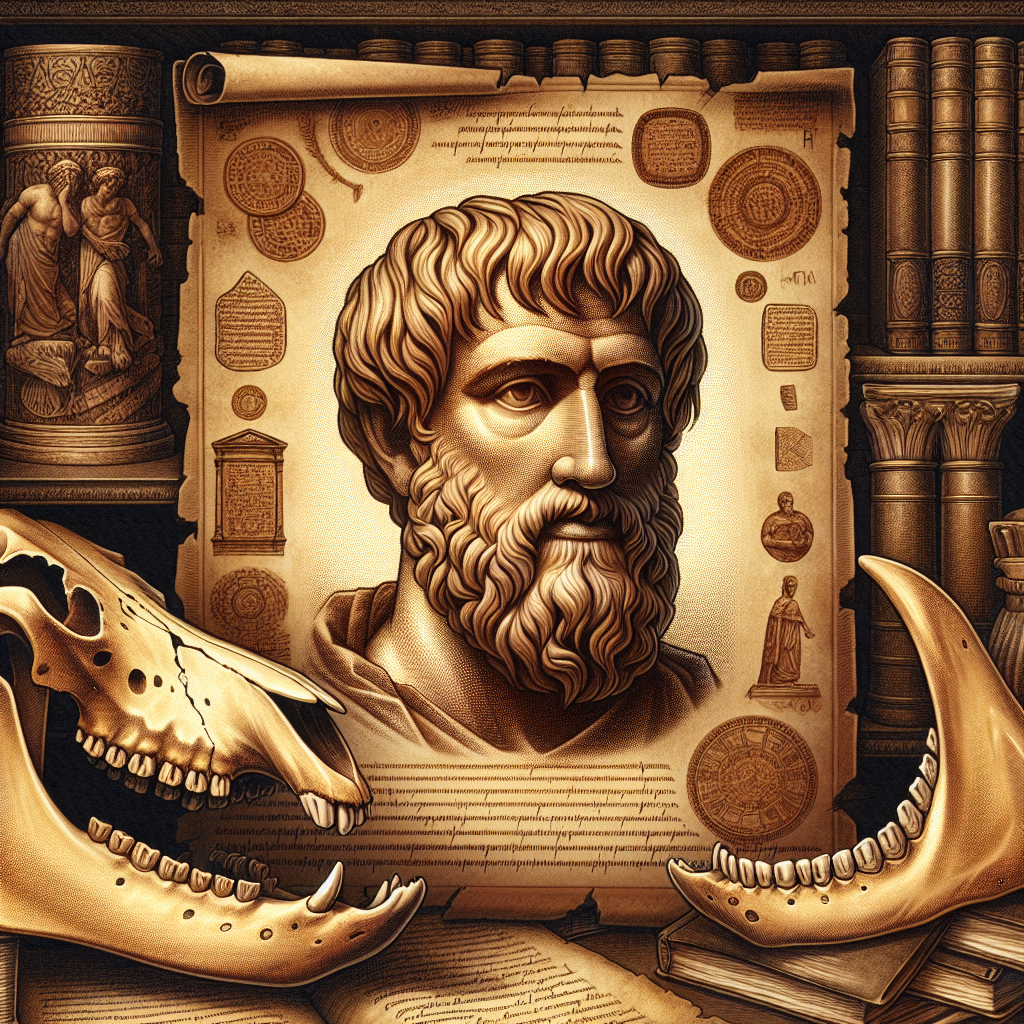In the realm of philosophy, history, and dental health, few tales are as curious and captivating as that of aristotle teeth in a donkey jaw. This intriguing story weaves together elements of ancient wisdom, anatomical exploration, and a dash of myth. In this blog post, we’ll explore the fascinating connection between Aristotle, the renowned Greek philosopher, and an unlikely specimen—a donkey jaw. Join us as we unravel this tale and discover its significance across various fields.
Who Was Aristotle?
Aristotle is one of the most influential figures in Western philosophy. Born in 384 BCE in Stagira, Greece, he was a student of Plato and later became the tutor of Alexander the Great. His contributions to logic, metaphysics, ethics, politics, and natural sciences have left an indelible mark on intellectual history. But what aboutaristotle teeth in a donkey jaw? How does this fit into his vast legacy?
Understanding Aristotle’s multifaceted contributions to various fields helps contextualize the story of aristotle teeth in a donkey jaw. His approach to studying nature and the human body was empirical, relying on observation and analysis rather than purely abstract reasoning. This method laid the groundwork for future scientific inquiry.
Aristotle’s curiosity knew no bounds. He explored everything from the stars above to the anatomy of animals. This broad scope of interests ultimately led him to examine even the most mundane specimens, such as a donkey’s jaw. But why did he turn his attention to such an ordinary object? And what did he hope to learn from it?
The Historical Context
The tale of aristotle teeth in a donkey jaw is set against the backdrop of ancient Greece, a time when scholars were deeply engaged in exploring the natural world. During Aristotle’s era, there was a strong emphasis on understanding the physical attributes and functions of living organisms. This was a period marked by a thirst for knowledge and a desire to uncover the mysteries of life.
Ancient Greek scholars often sought to dissect and study various animal species to gain insights into human anatomy and physiology. The examination of different animals’ jaws, including that of a donkey, was part of this broader quest for knowledge. aristotle teeth in a donkey jaw became a symbol of this relentless pursuit of understanding the natural world.
The story also highlights the importance of empirical observation in ancient Greek science. Unlike some of his contemporaries, Aristotle was not content with mere speculation. He believed in examining physical specimens firsthand to draw conclusions. This hands-on approach set him apart and contributed to the enduring legacy of his work, including the curious case of aristotle teeth in a donkey jaw.
Anatomy and Observation
Aristotle’s approach to studying the natural world was revolutionary for his time. He believed that understanding the anatomy of animals could provide valuable insights into their behavior and functions. This belief extended to examining the teeth of various animals, including donkeys. By carefully observing and dissecting specimens, Aristotle aimed to uncover the underlying principles governing life.
The study of teeth, in particular, held significance for Aristotle. Teeth are essential for chewing and digesting food, making them a crucial aspect of an animal’s biology. aristotle teeth in a donkey jaw exemplify his commitment to detailed anatomical observation. He meticulously recorded the structure and arrangement of teeth, seeking patterns and correlations that could shed light on broader biological concepts.
Aristotle’s meticulous approach to studying teeth also had practical implications. Understanding the dental anatomy of animals helped in identifying species, assessing their diets, and even drawing comparisons to human teeth. This comprehensive examination of teeth, including aristotle teeth in a donkey jaw, contributed to the foundation of comparative anatomy—a field that continues to evolve today.
The Symbolism of the Donkey Jaw
The choice of a donkey’s jaw as a specimen might seem peculiar at first glance. However, it carries symbolic significance. In many cultures, donkeys are associated with simplicity, humility, and hard work. By examining the teeth in a donkey jaw, Aristotle was perhaps emphasizing the importance of studying even the most unassuming creatures to gain profound insights.
The symbolism extends beyond the animal itself. The act of scrutinizing a donkey’s jaw reflects Aristotle’s dedication to thoroughness and attention to detail. It serves as a reminder that no subject is too trivial for exploration. aristotle teeth in a donkey jaw symbolize the philosopher’s unwavering commitment to understanding the natural world, regardless of the apparent insignificance of the subject matter.
This symbolism resonates with the broader theme of seeking knowledge in unexpected places. aristotle teeth in a donkey jaw encourage us to remain curious and open-minded, recognizing that valuable insights can emerge from the most unlikely sources. It underscores the idea that every detail, no matter how small, contributes to the larger tapestry of understanding.

The Dental Perspective
From a dental health enthusiast’s viewpoint, the story of aristotle teeth in a donkey jaw offers intriguing insights. Teeth are not only essential for chewing and digestion but also serve as indicators of an individual’s overall health. By examining the teeth of various animals, including donkeys, Aristotle contributed to the early understanding of dental anatomy and its implications.
Teeth are remarkable structures, each uniquely adapted to the dietary habits of different species. Aristotle’s detailed observations of teeth in a donkey jaw showcased the diversity of dental morphology. He noted differences in tooth shape, size, and arrangement, providing valuable data for comparative studies. These findings laid the groundwork for modern dental research.
aristotle teeth in a donkey jaw also highlight the importance of preventive dental care. Just as Aristotle meticulously studied animal teeth, we can draw parallels to maintaining our own dental health. Regular check-ups, proper oral hygiene, and a balanced diet are essential for preserving healthy teeth. The story serves as a timeless reminder of the significance of dental well-being.
Philosophy and Curiosity
aristotle teeth in a donkey jaw exemplify the philosopher’s insatiable curiosity and pursuit of knowledge. Aristotle’s philosophical inquiries were not limited to abstract concepts; they extended to the tangible aspects of the natural world. This holistic approach to philosophy set him apart and contributed to his enduring influence.
Aristotle believed that understanding the physical world was essential for grasping deeper truths. His examination of teeth in a donkey jaw was part of this broader quest for knowledge. By meticulously studying the natural world, Aristotle sought to uncover the underlying principles governing life, bridging the gap between philosophy and empirical observation.
This integrated approach to philosophy and natural science continues to inspire scholars today. aristotle teeth in a donkey jaw remind us that curiosity and a willingness to explore are fundamental to intellectual growth. It encourages us to question, observe, and seek connections between seemingly disparate fields of study, ultimately enriching our understanding of the world.
The Modern Relevance
Despite the passage of centuries, the story of aristotle teeth in a donkey jaw remains relevant in contemporary contexts. In today’s world, where specialization often dominates, Aristotle’s holistic approach serves as a valuable reminder of the importance of interdisciplinary exploration. The integration of philosophy, history, and dental health in this tale highlights the interconnectedness of knowledge.
Modern researchers and scholars continue to draw inspiration from Aristotle’s methodologies. The emphasis on empirical observation, detailed analysis, and cross-disciplinary thinking resonates with contemporary scientific practices. aristotle teeth in a donkey jaw serve as a timeless example of how curiosity-driven exploration can lead to profound insights and advancements.
Furthermore, the story underscores the enduring value of historical perspectives. By revisiting and reflecting on the work of ancient scholars like Aristotle, we gain a deeper appreciation for the foundations of modern knowledge. aristotle teeth in a donkey jaw remind us that the pursuit of understanding is a continuous journey, building upon the contributions of those who came before us.

Engaging the Audience
For dental health enthusiasts, history buffs, and philosophy students, the story of aristotle teeth in a donkey jaw offers a captivating narrative that bridges diverse interests. It invites readers to explore the intersections between different fields and appreciate the richness of intellectual exploration. By engaging with this tale, readers can gain insights that extend beyond the surface level.
Dental health enthusiasts can draw parallels between Aristotle’s meticulous observations and modern dental practices. The emphasis on detailed examination and preventive care aligns with contemporary approaches to maintaining oral health. History buffs can appreciate the historical context and symbolism, recognizing the broader significance of Aristotle’s work.
Philosophy students, on the other hand, can find inspiration in Aristotle’s holistic approach to knowledge. The integration of empirical observation and philosophical inquiry serves as a model for interdisciplinary thinking. aristotle teeth in a donkey jaw exemplify the philosopher’s commitment to seeking truth through diverse avenues of exploration.
Comparative Anatomy
Aristotle’s examination of teeth in a donkey jaw contributed to the development of comparative anatomy—a field that continues to thrive today. Comparative anatomy involves studying the similarities and differences in the anatomical structures of different species. Aristotle’s detailed observations laid the groundwork for this scientific discipline.
By comparing the dental morphology of various animals, including donkeys, Aristotle identified patterns and variations that provided insights into evolutionary relationships. His work highlighted the importance of studying multiple species to gain a comprehensive understanding of biological principles. aristotle teeth in a donkey jaw exemplify the value of comparative analysis in uncovering broader truths.
In contemporary research, comparative anatomy plays a crucial role in fields such as evolutionary biology, paleontology, and veterinary science. Scientists continue to build on Aristotle’s foundational work, using advanced tools and techniques to explore the intricacies of anatomical structures. The story of aristotle teeth in a donkey jaw serves as a reminder of the enduring relevance of comparative studies.
The Intersection of History and Myth
The tale of aristotle teeth in a donkey jaw also highlights the interplay between history and myth. While the story is rooted in historical context, it has taken on a mythical quality over time. This intersection adds layers of intrigue and invites readers to explore the boundaries between fact and legend.
Historical accounts of Aristotle’s work provide a basis for understanding his contributions to science and philosophy. However, the embellishments and interpretations that have emerged over centuries create a sense of wonder and curiosity. aristotle teeth in a donkey jaw exemplify how historical narratives can evolve into captivating myths that continue to capture the imagination.
This blending of history and myth encourages us to approach ancient tales with both critical analysis and a sense of wonder. It invites readers to appreciate the complexities of historical narratives and the ways in which they shape our understanding of the past. aristotle teeth in a donkey jaw serve as a testament to the enduring power of storytelling.
The Role of Empirical Observation
At the heart of Aristotle’s examination of teeth in a donkey jaw lies the principle of empirical observation. Aristotle’s commitment to firsthand examination and detailed documentation set him apart from many of his contemporaries. This emphasis on empirical observation became a hallmark of his approach to studying the natural world.
Empirical observation involves gathering data through direct sensory experience. Aristotle’s meticulous study of teeth exemplifies this approach. By closely observing the structure and arrangement of teeth in a donkey jaw, he sought to draw accurate conclusions about their function and significance. aristotle teeth in a donkey jaw underscore the importance of grounding theoretical insights in tangible evidence.
This principle remains foundational in modern scientific inquiry. Researchers across disciplines continue to rely on empirical observation to gather data, test hypotheses, and draw conclusions. Aristotle’s legacy reminds us that the pursuit of knowledge is rooted in careful observation and a willingness to engage with the physical world.
Exploring the Legacy
The story of aristotle teeth in a donkey jaw is more than a historical anecdote; it is a reflection of his enduring legacy. Aristotle’s contributions to philosophy, science, and empirical observation have left an indelible mark on intellectual history. His holistic approach to knowledge continues to inspire scholars and thinkers across generations.
aristotle teeth in a donkey jaw symbolize his commitment to exploring the natural world with curiosity and rigor. This legacy has influenced fields as diverse as biology, dentistry, philosophy, and comparative anatomy. The story serves as a reminder that the pursuit of understanding is a timeless endeavor, driven by a passion for discovery.
In contemporary contexts, Aristotle’s legacy encourages us to approach learning with an open mind and a willingness to explore. It invites us to recognize the interconnectedness of knowledge and the value of interdisciplinary thinking. aristotle teeth in a donkey jaw exemplify the enduring relevance of his work and the inspiration it continues to provide.
Conclusion
In the tale of aristotle teeth in a donkey jaw, we find a captivating narrative that bridges philosophy, history, and dental health. Aristotle’s commitment to empirical observation and his holistic approach to knowledge have left a lasting legacy. The story exemplifies the importance of curiosity, meticulous study, and the pursuit of understanding in even the most unexpected places.
For dental health enthusiasts, the story offers insights into the significance of detailed examination and preventive care. History buffs can appreciate the historical context and symbolic layers, while philosophy students find inspiration in Aristotle’s interdisciplinary thinking. aristotle teeth in a donkey jaw invite us all to explore the intersections between diverse fields and recognize the richness of intellectual exploration.
As we reflect on this curious tale, we are reminded that the pursuit of knowledge is a continuous journey. Aristotle’s legacy encourages us to remain curious, open-minded, and willing to explore the world around us. Whether in the study of teeth or the exploration of broader philosophical concepts, the story of aristotle teeth in a donkey jaw serves as a timeless reminder of the enduring quest for understanding.






